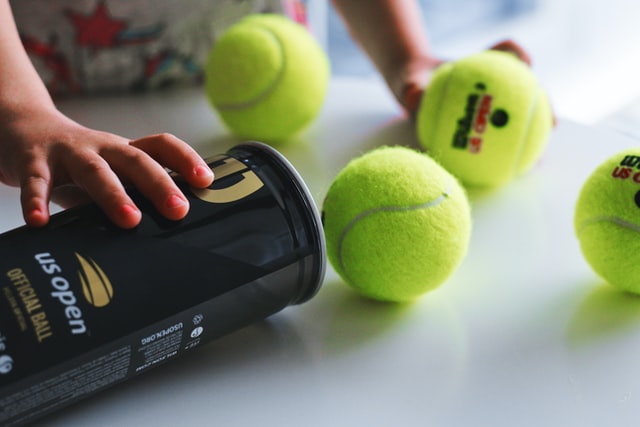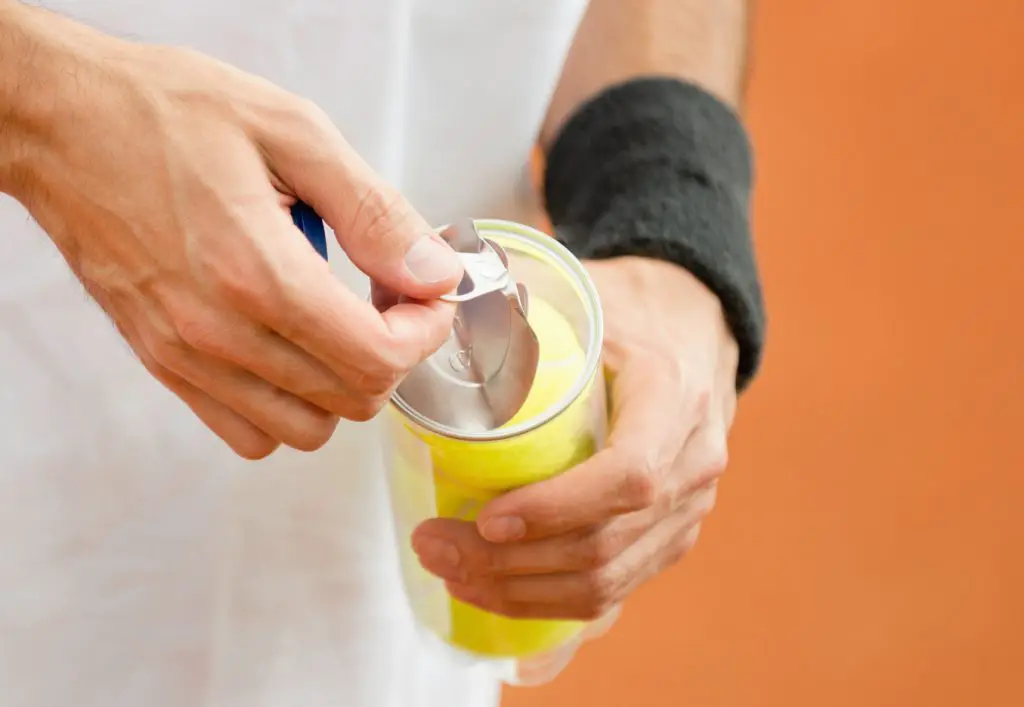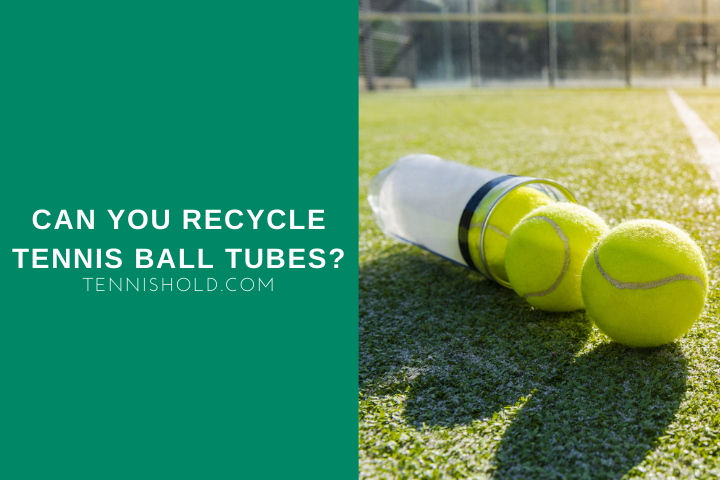Some people are more conscious of the environment than others. Whatever your opinions, it’s impossible to not notice the amount of plastic/metal used in the ball tubes.
So, is it possible to recycle tennis ball tubes?
Tennis ball tubes are recyclable. Both the plastic and metal used in the tubes are reusable and can be compacted. The only potential issue is the separation of the materials, but this is dependent on the recycling plant.
Even though it is possible to recycle ball tubes, I am amazed at how many people still dispose of them as standard trash.
In this piece I will be covering:
- What materials make up tennis ball tubes
- Whether tennis ball tubes can be recycled
- Whether you need to separate the materials personally
If you’re looking for ways to reduce waste when playing with new balls, read on!
What Are Tennis Tubes Made Of?

Not all tennis ball tubes are made with the same material.
The most common material used is plastic.
They also come with a metal flap inside to preserve the pressure of the tennis balls. Two examples of balls that use plastic packaging are Head Tour Balls and Babolat Gold Balls.
Most plastic containers will also have an aluminum ring at the top where the lid snaps on and off.
Another material often used for ball tubes is metal.
The most famous ball sold in a metal tube is the Slazenger Wimbledon Ball. Slazenger’s website does not specify what type of metal is used. Like the plastic containers for the Head and Babolat balls, there is a metal flap.
In 2019, Wilson launched the Triniti ball line. The Triniti balls come in an octagonal cardboard tube that is 100% recyclable. There is no metal lid either, so the packaging can be put straight in the paper recycling.
The Triniti ball is pressurized but is not kept in a pressurized can. To maintain its pressure from the manufacturing stage to play, they use a new core. This new core is called Engage and is designed to maintain the ball’s pressure for 4x longer than standard.
The core is the two shells that form together to make the tennis ball the shape it is.
Wilson also donates 5% of all profits to worldwide sustainability efforts. Wilson does not specify what worldwide sustainability efforts consist of or exactly where the money goes.
Are Tennis Ball Cans Recyclable?

Every year, 350 million tennis balls are sold worldwide, and all containers and packaging will eventually be disposed of. This is an enormous amount of waste.
Let’s assume 250 million balls are sold in 4 ball cans, with the rest in different packaging (singles, buckets, etc.). That is 62,500,000 cans sold. Once the cans have been opened, they lose their purpose of maintaining pressure.
At this point, most players will chuck the tubes in the trash.
Tennis ball cans are recyclable, but there are few things you need to bear in mind.
Balls such as the Babolat Gold and Head Tour are sold in plastic containers. The plastic containers also have a metal flap and aluminum ring at the top.
This means that many people may need to cut the ring off and separate the plastic from the metal.
When it comes to the recycling of tubes, it is dependent on your local recycling service. Some modern recycling plants have equipment that can separate the materials automatically.
These modern waste plants have automated machines that can screen recyclable materials. They can also separate them. Once separated, the materials can be passed on to their respective recyclers.
In 2013 there were 570 recycling plants in the US. Of these plants, 240 had single-stream machines capable of separating recyclable materials. Thus, in 2013, 100 million US residents’ recycling was covered by single-stream machines.
The issue comes with knowing if you live in an area with one of these machines. If your city council offers mixed recycling collection, you can assume that they have the equipment to separate it.
If not, you are safer separating the plastic and metal yourself.
If you would like to see how single stream recycling works, here is a great video.
Recycling the wrong things doesn’t only cause problems for the recycling plant but can, in some cases, harm the environment.
The biggest issue for recycling plants when materials are not sorted correctly is contamination. Contamination occurs when a type of material ends up in the wrong recycling section. An example would be metal going into a paper recycling section.
Contamination causes economic issues for recycling plants. They have to pay people to reorganize the materials. If it is a more automated plant, it will create unnecessary work for the machines.
A problem that once occurred (and still does in some poorer countries) is metal jamming the machine in plastic and paper recycling plants.
In the worst case scenario, it could even damage the equipment.
Do You Need To Cut The Top Off The Can Before Disposing?

If you are not served by a modern single-stream recycling plant, cutting off the metal may be necessary. The machines in multi-stream recycling plants cannot automatically separate materials.
Modern recycling machines are capable of separating materials. They use magnetic separators, which divide parts and allow them to be sorted into the correct sections.
The science behind magnetic separations can seem complex at first.
Magnetic separators are designed to identify specific types of metals. When these metals are detected, they pull them off the conveyor belt and place them in a separate zone.
Once separated from the other materials and placed in a separate zone, they can continue the recycling process in the usual way.
Tennis ball tubes are relatively simple compared to other objects that go through recycling plants.
There are plenty of greasy items or have oil on them that can cause issues for the magnetic separators, but cans are not part of them.
The grease can cause damage to the machines and affect their magnetism. Some recycling plants will use oil separators to try and avoid this problem.
Long story short, if you have mixed recycling in your area, you are safe just putting the entire tube in.
Final Words
There is definitely a push within the tennis community to see a waste reduction. The biggest challenge it faces is getting people to recycle the tubes rather than place them in the trash.
I think clubs should provide specific bins to encourage the recycling of ball tubes. Manufacturers could also make it more transparent on the tubes that they are recyclable.
What ideas do you have? For example, what could tennis clubs do to get more people to recycle ball tubes?

